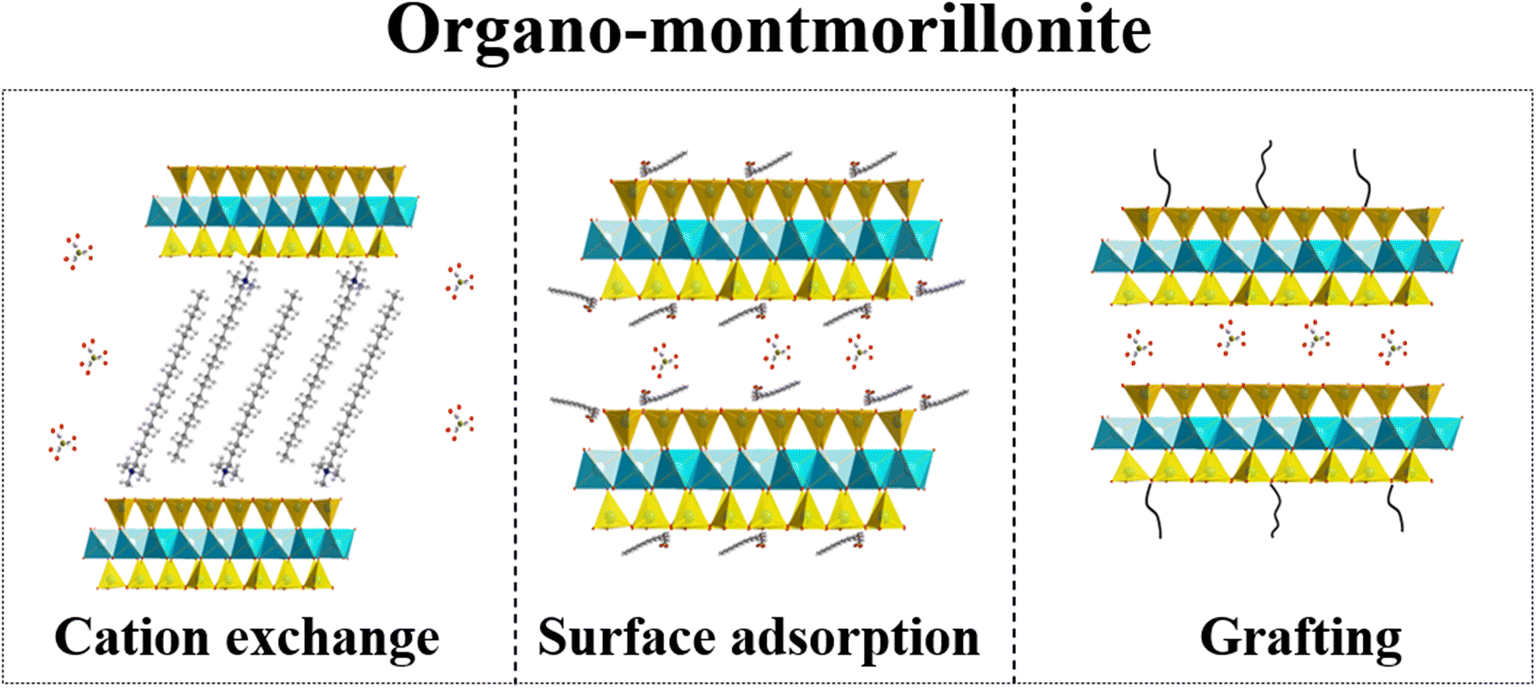Crossref Citations
This article has been cited by the following publications. This list is generated based on data provided by
Crossref.
Geng, Junming
Qin, Jianyu
and
He, Jiyu
2021.
Preparation of Intercalated Organic Montmorillonite DOPO-MMT by Melting Method and Its Effect on Flame Retardancy to Epoxy Resin.
Polymers,
Vol. 13,
Issue. 20,
p.
3496.
Yuan, Guodong
Wei, Jing
and
Theng, Benny K. G.
2021.
Montmorillonite-Hydrochar Nanocomposites as Examples of Clay–Organic Interactions Delivering Ecosystem Services.
Clays and Clay Minerals,
Vol. 69,
Issue. 4,
p.
406.
Ren, Jun
Luo, Shuqiong
Shi, Shi
Tan, Hongbo
Wang, Xianfeng
Liu, Min
and
Li, Xiangguo
2021.
Synthesis and optimization of a montmorillonite-tolerant zwitterionic polycarboxylate superplasticizer via Box-Behnken design.
Clay Minerals,
Vol. 56,
Issue. 2,
p.
117.
Chen, Xi Xi
Liu, Jia Hui
Kurniawan, Alfin
Li, Ke Jin
and
Zhou, Chun Hui
2021.
Inclusion of organic species in exfoliated montmorillonite nanolayers towards hierarchical functional inorganic–organic nanostructures.
Soft Matter,
Vol. 17,
Issue. 43,
p.
9819.
Zhou, Shu Qing
Niu, Yu Qin
Liu, Jia Hui
Chen, Xi Xi
Li, Chun Sheng
Gates, Will P.
and
Zhou, Chun Hui
2022.
Functional Montmorillonite/Polymer Coatings.
Clays and Clay Minerals,
Vol. 70,
Issue. 2,
p.
209.
Liu, Qingxin
Wu, Limei
Wang, Xiaolong
Hu, Ling
Gao, Lili
Hu, Yuanbiao
and
Tang, Ning
2022.
Study on preparation and mechanism of organic montmorillonite with different functional groups.
AIP Advances,
Vol. 12,
Issue. 4,
He, Haijie
Xu, Erpei
Qiu, Zhanhong
Wu, Tao
Wang, Shifang
Lu, Yuhua
and
Chen, Guannian
2022.
Phenol Adsorption Mechanism of Organically Modified Bentonite and Its Microstructural Changes.
Sustainability,
Vol. 14,
Issue. 3,
p.
1318.
Piechota, Katarzyna
Czaja, Krystyna
Bączek, Marcin
Kudła, Stanisław
Groch, Paweł
and
Kosno, Jacek
2022.
Effect of a new amido‐imidazolium compound as a clay modifier on properties of polypropylene composites.
Polymer Composites,
Vol. 43,
Issue. 2,
p.
987.
Kurenkov, V. V.
Guseva, M. A.
Levin, I. S.
and
Gerasin, V. A.
2022.
One-Pot Synthesis of Polymer-Aluminosilicate Coating Materials from Heterogeneous Polymer Blends.
Polymer Science, Series A,
Vol. 64,
Issue. 4,
p.
318.
Saxena, Ankit
Kumar, Deepak
and
Tandon, Naresh
2022.
Development of lubricious environmentally friendly greases using synergistic natural resources: A potential alternative to mineral oil-based greases.
Journal of Cleaner Production,
Vol. 380,
Issue. ,
p.
135047.
Saxena, Ankit
Kumar, Deepak
and
Tandon, Naresh
2022.
Unexplored potential of acacia and guar gum to develop bio-based greases with impressive tribological performance: A possible alternative to mineral oil-based greases.
Renewable Energy,
Vol. 200,
Issue. ,
p.
505.
Chen, Yuli
Yang, Shuai
Zhang, Taojun
Xu, Mengdie
Zhao, Jing
Zeng, Minfeng
Sun, Kailang
Feng, Ruokun
Yang, Zhen
Zhang, Peng
Wang, Baoyi
and
Cao, Xingzhong
2022.
Positron annihilation study of chitosan and its derived carbon/pillared montmorillonite clay stabilized Pd species nanocomposites.
Polymer Testing,
Vol. 114,
Issue. ,
p.
107689.
Saxena, Ankit
Kumar, Deepak
Tandon, Naresh
Kaur, Tejinder
and
Singh, Neetu
2022.
Development of Vegetable Oil-Based Greases for Extreme Pressure Applications: An Integration of Non-toxic, Eco-Friendly Ingredients for Enhanced Performance.
Tribology Letters,
Vol. 70,
Issue. 4,
Mao, Xiao
Liu, Haibo
Chu, Ziyang
Chen, Tianhu
Zou, Xuehua
Chen, Dong
Zhang, Xuemei
and
Hu, Jinchao
2022.
Adsorption of lead by kaolinite, montmorillonite, goethite and ferrihydrite: performance and mechanisms based on quantitative analysis.
Clay Minerals,
Vol. 57,
Issue. 3-4,
p.
230.
Geng, Junming
Lan, Yanhua
Liu, Shanshan
He, Jiyu
Yang, Rongjie
and
Li, Dinghua
2022.
Preparation and Characterization of TCPP-CaMMT Nanocompound and Its Composite with Polypropylene.
Nanomaterials,
Vol. 12,
Issue. 9,
p.
1428.
Liu, Chenghuan
Feng, Shuangjiang
Shi, Shengnan
Feng, Mingxin
Cai, Haoran
Bu, Xiaohai
He, Man
and
Zhou, Yuming
2023.
Extreme-environment tolerant superhydrophobic montmorillonite/hollow SiO2 composite coating as building radiative cooler for scale energy conservation.
Colloids and Surfaces A: Physicochemical and Engineering Aspects,
Vol. 674,
Issue. ,
p.
131972.
Cai, Chuan
Cai, Jingong
Liu, Huiming
Wang, Xuejun
Zeng, Xiang
and
Wang, Yongshi
2023.
Occurrence of organic matter in argillaceous sediments and rocks and its geological significance: A review.
Chemical Geology,
Vol. 639,
Issue. ,
p.
121737.
Li, Qiang
Berraud-Pache, Romain
Souprayen, Christelle
and
Jaber, Maguy
2023.
Intercalation of lecithin into bentonite: pH dependence and intercalation mechanism.
Applied Clay Science,
Vol. 244,
Issue. ,
p.
107079.
Li, Ting-Yu
Li, Wei-Jing
and
Wey, Ming-Yen
2023.
Strategies for designing hydrophobic MnCe-montmorillonite catalysts against water vapor for low-temperature NH3-SCR.
Fuel,
Vol. 350,
Issue. ,
p.
128857.
Saxena, Ankit
Kumar, Deepak
and
Tandon, Naresh
2023.
Dynamic performance of newly developed environmentally friendly greases containing polysaccharide gums in rolling bearing.
Proceedings of the Institution of Mechanical Engineers, Part C: Journal of Mechanical Engineering Science,





